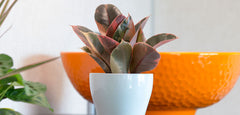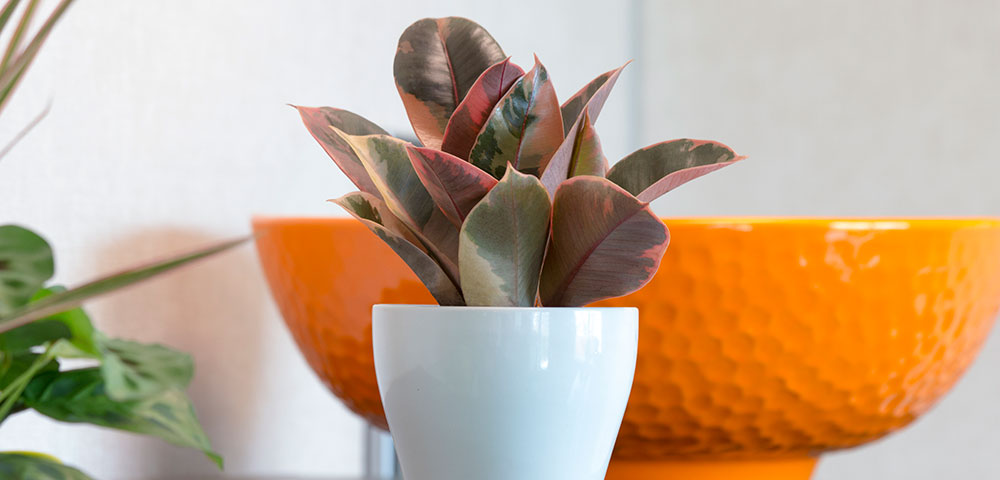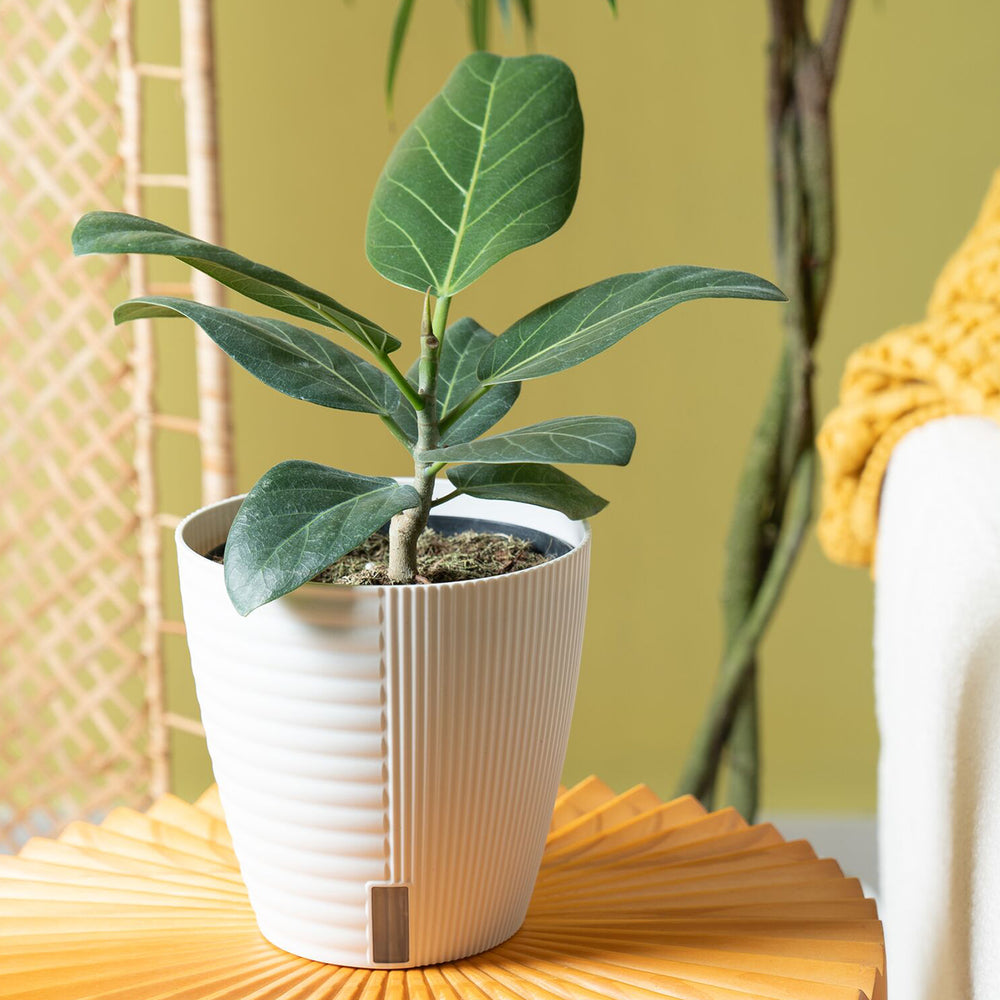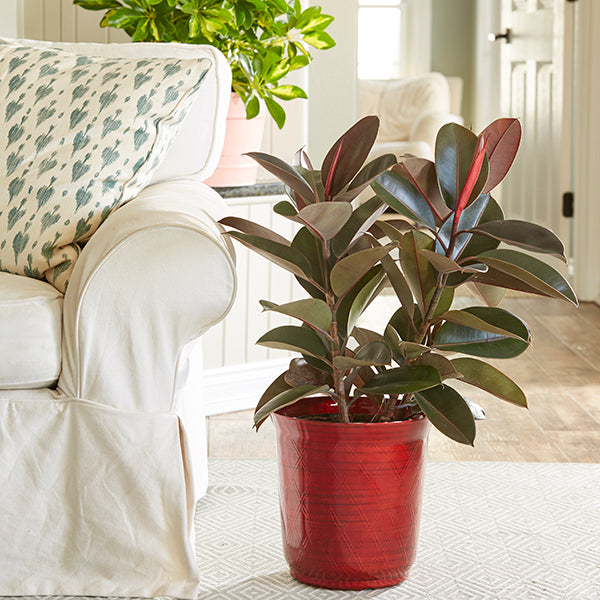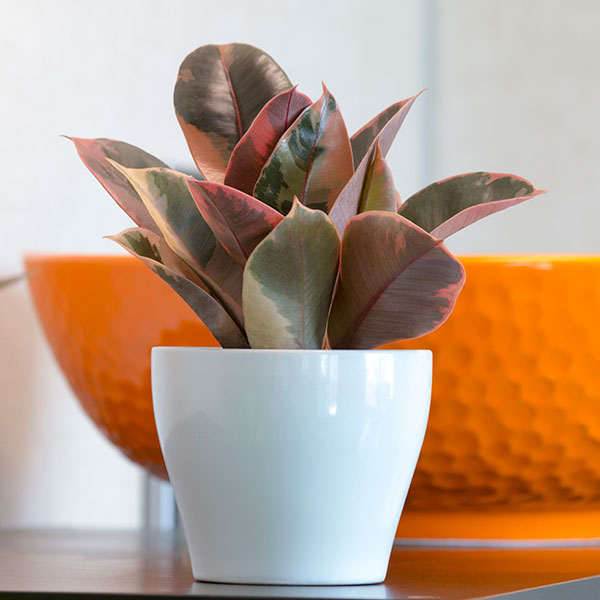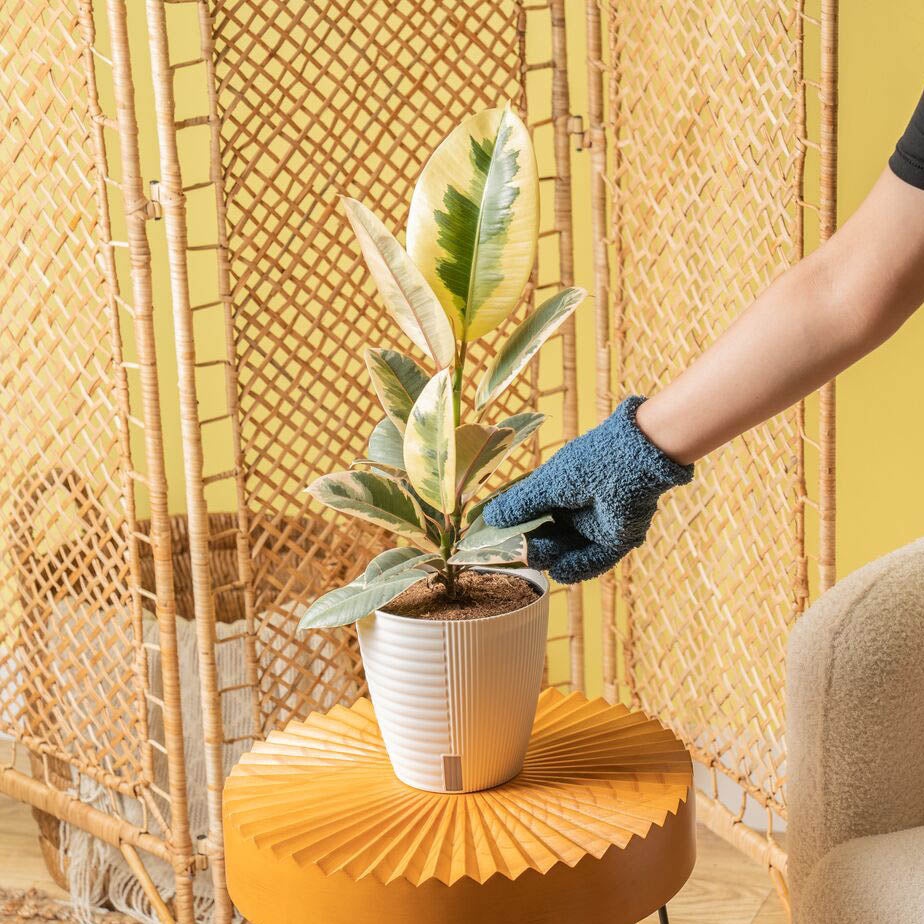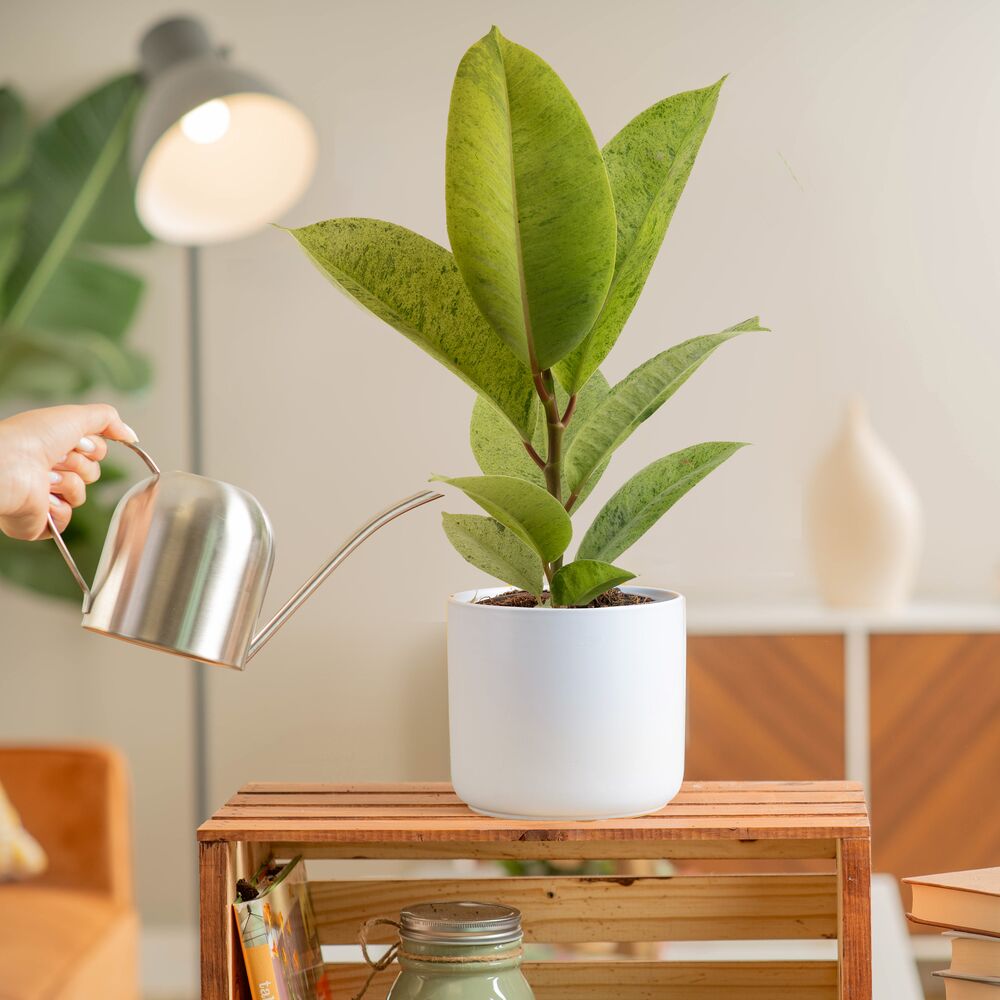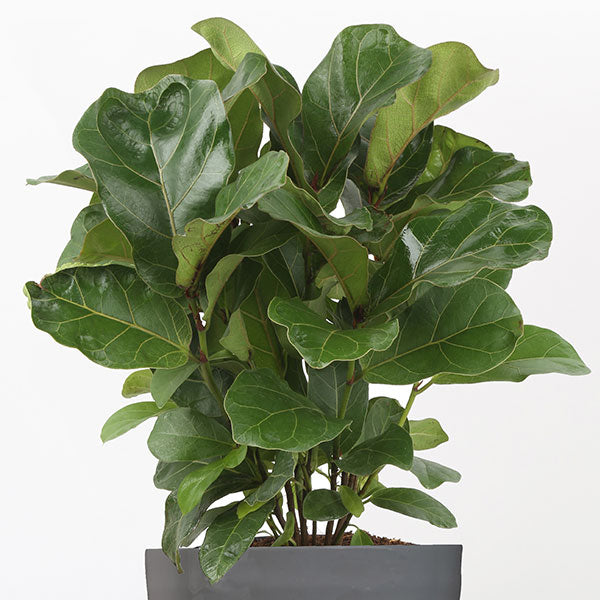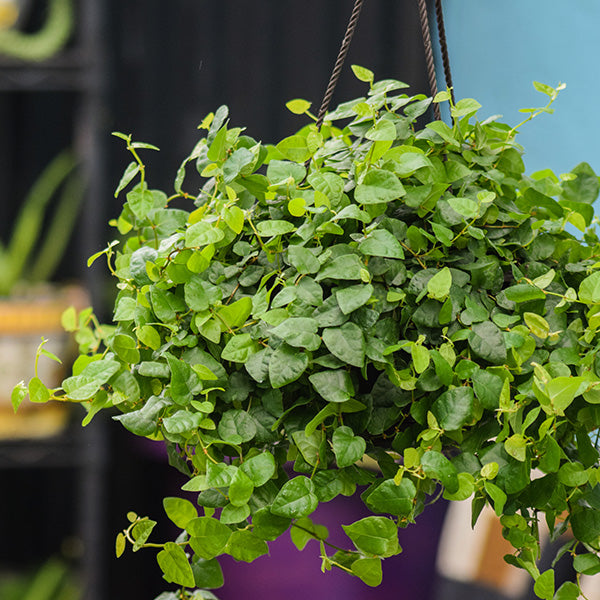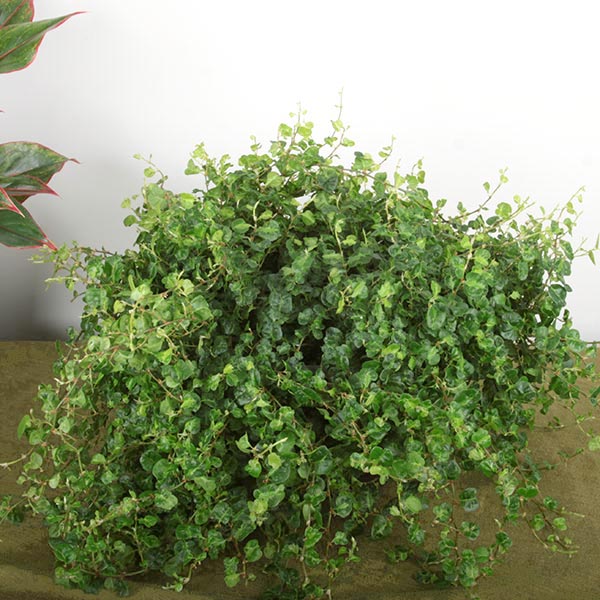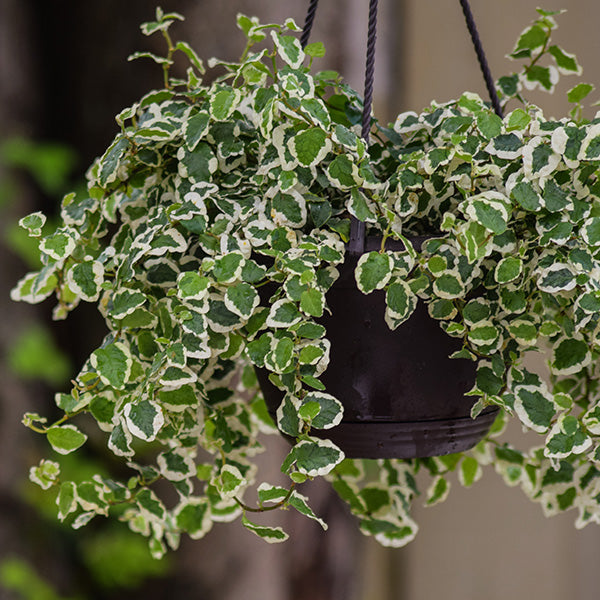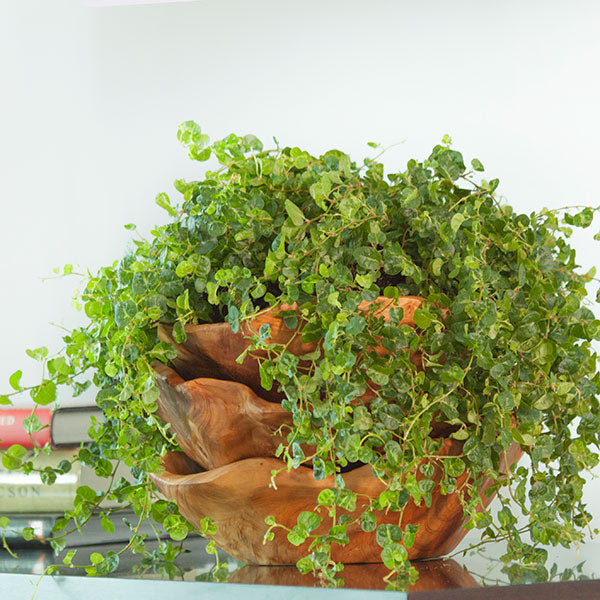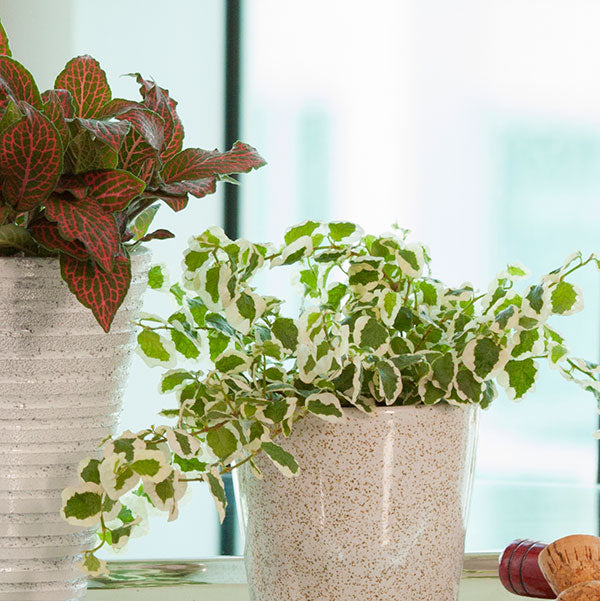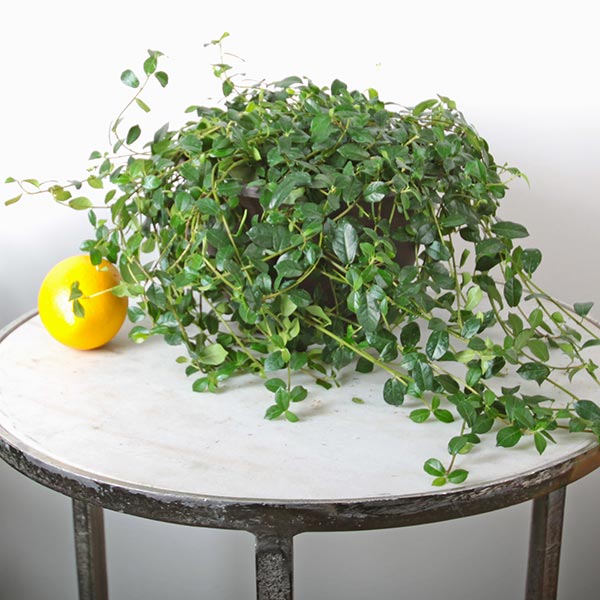Ficus (Ficus spp.)
Ficus Plant Features
Ficus -- also called figs -- are among the most popular indoor plants, and for good reason. These are easy to grow houseplants and offer a lot of variety, from low groundcover types to tall trees. Ficus also offer a variety of textures, so there's one for practically everyone's personal style.Weeping ficus is perhaps the most popular indoor tree. Its shiny leaves and gracefully arching branches give the tree a delicate, elegant appearance. Rubber trees are also popular upright types; they have large leaves, which are often flushed with shades of red and purple. Creeping figs are also common houseplants; they have small foliage and are excellent for hanging baskets. And fiddle leaf fig has become one of the trendiest houseplants because of its large, dramatic leaves.
Creeping fig is an excellent choice for hanging baskets and growing on a mantle. Because of its tiny stature, creeping fig is also ideal for terrariums.
Ficus Questions?
Just drop us an email and one of our indoor plant experts will get back to you!
Ficus Growing Instructions
Grow most ficus varieties in medium to bright light. If they don't get enough light, they'll grow slowly and have long stems, giving the plants an unattractive, lanky appearance. Most ficus varieties will tolerate some direct sun on their leaves when grown as houseplants, so they're great choices for sunny window sills.Water ficus when the top inch or so of the potting mix starts to feel dry to the touch. Ficus are quite resilient and survive inconsistent watering, but grow best when they get moisture on a regular basis. Creeping ficus varieties tend to want to be kept a little more moist than their upright-growing cousins. Don't let them dry out completely.
Fertilize ficus once or twice a year in spring and summer, when temperatures are warmer and plants are putting on more growth. You can fertilize your ficus more frequently if you wish; doing so will cause these plants to grow faster.
Prune ficus anytime they start to get too large. Most types take well to pruning and will branch out, becoming thicker and bushier when you cut them back. One note: Ficus have a milky-white sap and some tips will drip sap after pruning. Use a rag or soft cloth to absorb the sap to prevent it from dripping on the floor.
While ficus are easy to grow, weeping ficus in particular has a reputation for dropping a lot of leaves when it experiences a change in condition. So if your ficus loses leaves when you first bring it home, don't worry: It should regrow new foliage once it's adapted to its new location.
Get in-depth information on fiddle leaf fig (Ficus lyrata)!
Note: Ficus are not meant for human or animal consumption. These plants produce a milky sap that can cause irritation if you have sensitive skin.
-
Water
Medium water needs
-
Light
Indoors: High light
Indoors: Medium light
-
Colors
Green
Purple
Variegated
-
Special Features
Purifies the air

